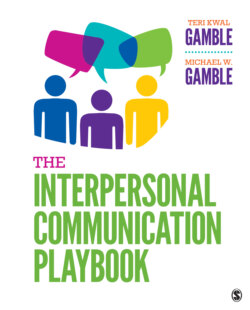Читать книгу The Interpersonal Communication Playbook - Teri Kwal Gamble - Страница 72
На сайте Литреса книга снята с продажи.
How Are the Self and Self-Concept Related?
ОглавлениеThe self and the self-concept differ from each other in a number of ways. First, the self is very fluid and in a state of constant change, whereas the self-concept is more highly structured and difficult to change (see Figure 2.1). Second, a portion of the self-concept may not actually be included in the self; this area represents the part of ourselves that we invent. Third, there is much more to the self than is included within the self-concept; this area represents our untapped potential. For example, you may think of yourself as friendly and outgoing, while others see you as snobbish and reserved. You may have the potential to become a leader, but because of your inability to convince others that you would like to work with them, you might not have the opportunity to demonstrate this talent.
Figure 2.1 The Self and the Self-Concept
Do you see yourself as others see you?
REUTERS/Mario Anzuoni (UNITED STATES ENTERTAINMENT)
To put it another way, the self-concept is a “map” that we create to chart the “territory” that is the self.6 Our map or mental picture is, at least in part, a result of our interpretations of the messages others send us. As such, it may be accurate or inaccurate, positive or negative. The self-concept is depicted in Figure 2.1 as a rigid, geometric design to indicate that we like to make sense to ourselves. Experiencing uncertainty about the self is not a comfortable state for us, and so we work to develop consistency in the way we perceive ourselves.
